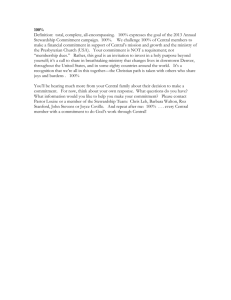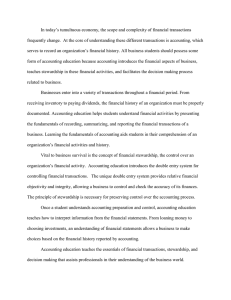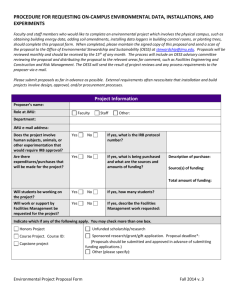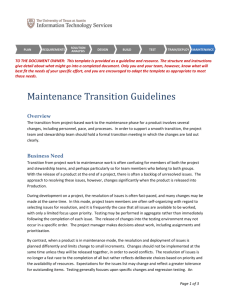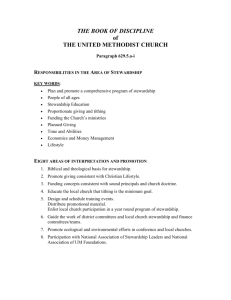PROJECT INITIATION PROPOSAL FORM
advertisement
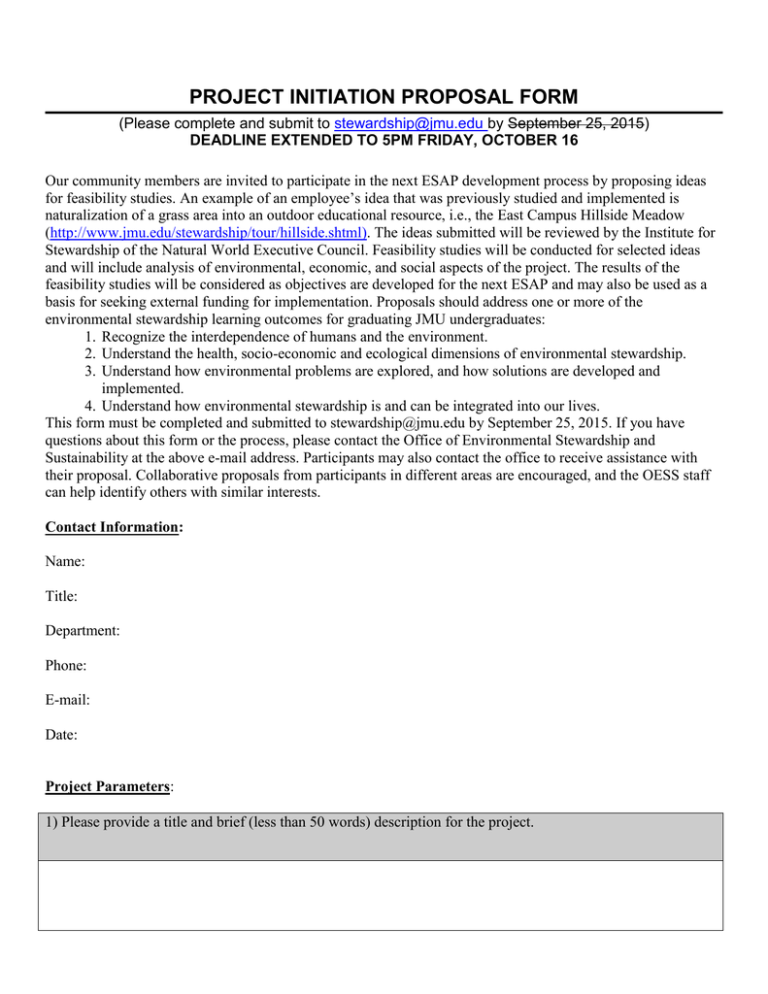
PROJECT INITIATION PROPOSAL FORM (Please complete and submit to stewardship@jmu.edu by September 25, 2015) DEADLINE EXTENDED TO 5PM FRIDAY, OCTOBER 16 Our community members are invited to participate in the next ESAP development process by proposing ideas for feasibility studies. An example of an employee’s idea that was previously studied and implemented is naturalization of a grass area into an outdoor educational resource, i.e., the East Campus Hillside Meadow (http://www.jmu.edu/stewardship/tour/hillside.shtml). The ideas submitted will be reviewed by the Institute for Stewardship of the Natural World Executive Council. Feasibility studies will be conducted for selected ideas and will include analysis of environmental, economic, and social aspects of the project. The results of the feasibility studies will be considered as objectives are developed for the next ESAP and may also be used as a basis for seeking external funding for implementation. Proposals should address one or more of the environmental stewardship learning outcomes for graduating JMU undergraduates: 1. Recognize the interdependence of humans and the environment. 2. Understand the health, socio-economic and ecological dimensions of environmental stewardship. 3. Understand how environmental problems are explored, and how solutions are developed and implemented. 4. Understand how environmental stewardship is and can be integrated into our lives. This form must be completed and submitted to stewardship@jmu.edu by September 25, 2015. If you have questions about this form or the process, please contact the Office of Environmental Stewardship and Sustainability at the above e-mail address. Participants may also contact the office to receive assistance with their proposal. Collaborative proposals from participants in different areas are encouraged, and the OESS staff can help identify others with similar interests. Contact Information: Name: Title: Department: Phone: E-mail: Date: Project Parameters: 1) Please provide a title and brief (less than 50 words) description for the project. 2) Describe in 250 or less words, the need for the project, how it would benefit JMU if implemented, and how the results would be measured. 3) What economic, environmental, and social aspects should the feasibility study examine? 4) What is the estimated time and professional skill set needed to conduct this feasibility study? 1 5) Have you seen a similar feasibility study or project at another public university? If so, please attach a summary and provide a website if available. 6) Identify which learning outcome(s) will be addressed by checking the applicable boxes below. ☐ Recognize the interdependence of humans and the environment. ☐ Understand the health, socio-economic and ecological dimensions of environmental stewardship. ☐ Understand how environmental problems are explored, and how solutions are developed and implemented. ☐ Understand how environmental stewardship is and can be integrated into our lives. 2
